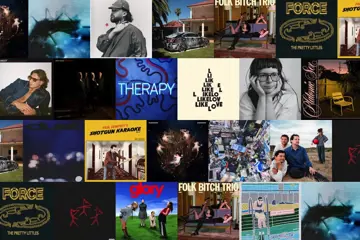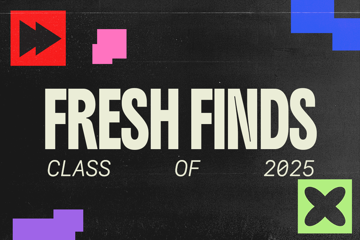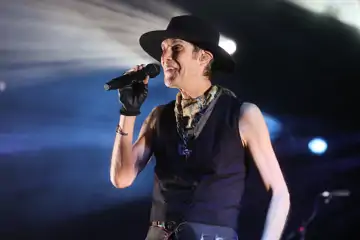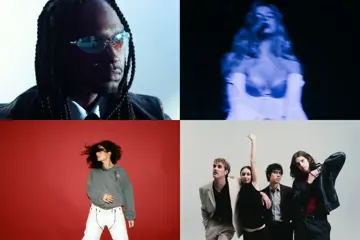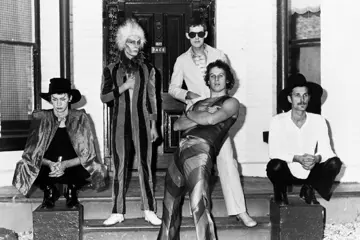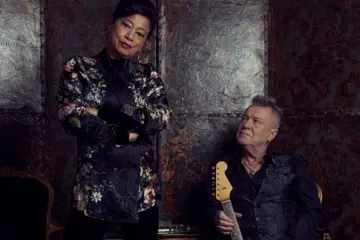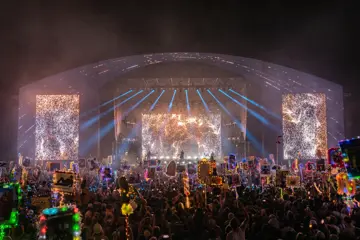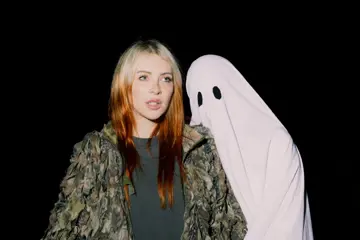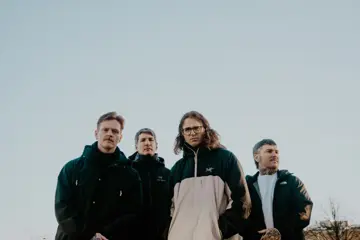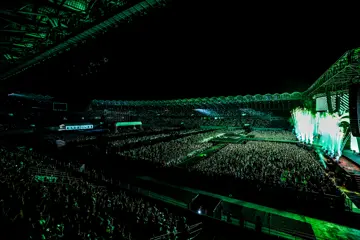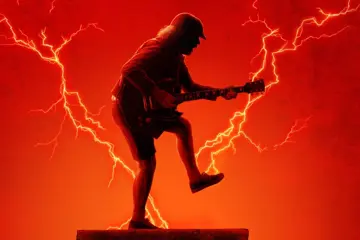Curtis Taylor and Lily Hibberd are artists from very different backgrounds. The two have come together to co-create The Phone Booth Project, currently on display amidst a plethora of talented Martumili artists at the Fremantle Arts Centre. “'Martu' means our people, 'Mili' means belongs to,” explains Martu native Curtis Taylor. The Martu country extends over a large amount of space across the western desert and although there is a great deal of distance between the various townships, a strong sense of family and community prevails.
Amidst the sprawling desert landscape and its stark isolation stands the unlikely Telstra phone booth. “This is a really interesting tool in the desert for keeping people in touch with each other and it's quite bizarre in so many ways that it's used differently. It's totally different to the city, in the way that we use phones. That, for us, was a really great concept to begin with,” says Melbourne artist Lily Hibberd on the topic of their project.
From opposite sides of Australia and with unique artistic expertise and personal heritage, the union of Taylor and Hibberd for The Phone Booth Project is reminiscent of the installation itself, which features video interviews from Martu people to represent a sense of the community and their ability to connect through the phone booth despite the expansive landscape. “One of our first jobs was actually to go and rip out the phone booth,” says Hibberd, gesturing to the rusted old phone booth that stands in the middle of their installation. “That was one from a town that is no longer being lived in… it was fun, we didn't really know each other. We'd met twice.”
Together the artists developed a sense of the community and formed a story from the interviews that they conducted with the Martu people. “This is really their work,” says Hibberd, “we've just put it into a narrative.”
“It's interesting,” continues Taylor, “a lot of Martu ring in to the phone booths searching for people, for family… Martu know where people are in the desert but using the phone booths they can know whether they'd be in town or down in Perth for an operation or, you know, in the next community.”
“And this was also very like one of the stories we were told, that the elders would use fire just like they use a phone now,” adds Hibberd.
“In bushman days, a lot of Martu would use waru or fire to signal people or talk to people; ask them for an invitation to their country, if they can hunt on their lands or they can come and meet them,” explains Taylor.
The installation tells a story of the community and connectivity of the Martu people, exploring the vibrancy of the Martu culture and offering a glimpse into the colourful landscape of the western desert. They hope to engage the audience with scenes of a lifestyle that few of us would have had the opportunity to experience.
WHAT: We Don't Need a Map: A Martu Experience Of The Western Desert
WHEN & WHERE: Until Wednesday 18 January, Fremantle Arts Centre

